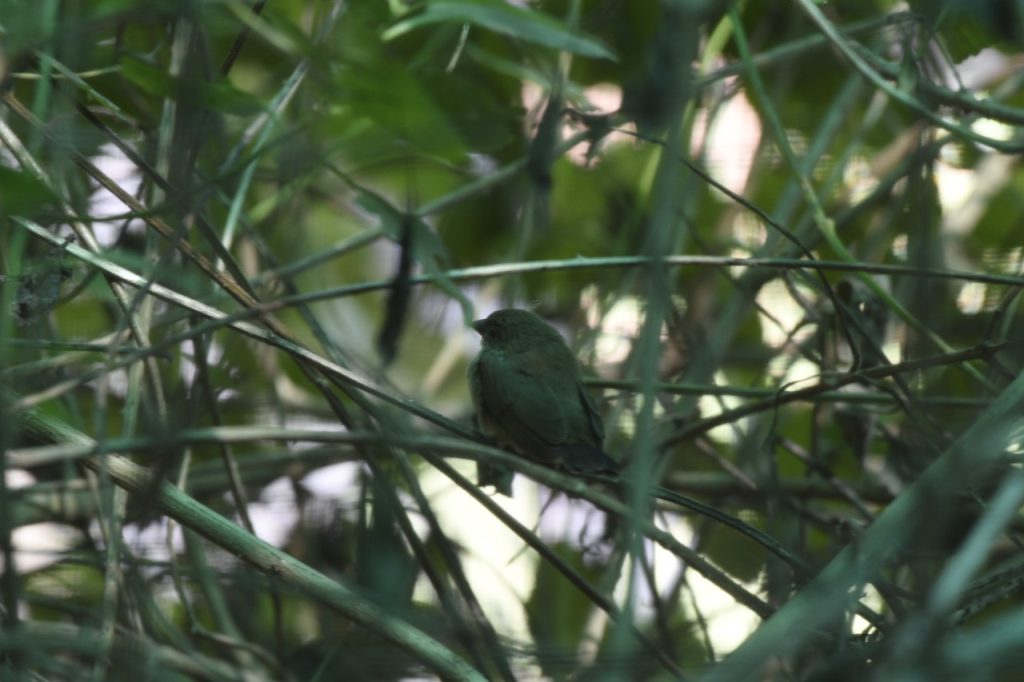In one of the rarest moments in bird conservation, a Green Munia bird has given birth to four chicks in a bird park of Udaipur, Rajasthan, in the very first breeding effort. The 10 cm small bird is listed as vulnerable in the IUCN red list, that is, it’s on the verge of extinction. All four chicks are healthy and safe, bringing good cheer to the park.
Speaking with Indian Masterminds, IFS officer Ajay Chittora, who is the Deputy Conservator of Forest, Udaipur, shared details about this important moment in Udaipur Bird Park.
ABOUT GREEN MUNIA
Amandava Formosa is the scientific name of Green Munia, and it is a tiny bird of about 10 cm with a distinctive green and yellow colour, with black-barred flanks and a reddish bill. The Green Munia inhabits dry, boulder-strewn shrub jungles, small patches of grasslands with low bushes, sugarcane fields, and open shrubby forest, generally in lowlands and foothills. It feeds mostly on seeds and insects.
Endemic to central India, its population is unevenly distributed across southern Rajasthan, central Uttar Pradesh, Madhya Pradesh, southern Bihar and West Bengal, southern Maharashtra and Northern Andhra Pradesh. This species is listed as vulnerable in the IUCN red list of threatened species, as their population is rapidly declining due to widespread capture from the wild for the pet trade.
Green Munia is resident, very locally and unevenly distributed, and on the whole, uncommon. It is listed in Schedule IV of the Indian Wildlife (Protection) Act, 1972, whereby its hunting and trapping is totally prohibited.
BIRTH OF 4 CHICKS
So, when a Green Munia gave birth to four chicks at the Bird Park located in Gulab Bagh, Udaipur, there was much rejoicing. With this, Udaipur Bird Park has become the first bird park in India where this bird has bred and all its four chicks are healthy and safe.
Reportedly, so far, there has been no such example in any zoo in India, where Green Munia has given birth to chicks. Most zoos prefer to keep larger birds and none keeps this 10 cm bird. “This bird is on the Red List of the International Union for Conservation of Nature (ICUN). That is, it is on the verge of extinction. That’s why this incident is being considered as a big step in the zoo world,” Mr. Chittora Said.
In Rajasthan, currently this bird is found towards Mount Abu and Gogunda. For conservation efforts of Green Munia to be successful, it is quite important that one must have a conservation breeding centre as well, so that if the population in the wild goes down, it can be reintroduced from this place.
Also, catching the Green Munia and performing breeding is quite difficult. “This is for the first time that a Green Munia has given birth in captivity. It is the success of our conservation programme, in which Bombay Natural History Society (BHNS) has come forward to help us,” Mr. Chittora said, adding that Dr. Rajat Bhargava, an ornithologist, developed a natural environment here, too. Apart from breeding, the natural environment was for the day-to-day living of the bird, for it to thrive well. Care has been taken to use the local soil, so that the birds can eat insects, apart from the feed which is given to them regularly. This species lay at least four eggs in a nest that it usually make by itself.
SPECIAL CARE
Special care is being taken of the new kids on the block. Proper temperature is being maintained in the park as the winter cold has set in. The nest has been covered with plastic from all sides, so that the chicks stay warm inside. The park also abounds with native plants and local grasses brought from Mount Abu, with nests made of bamboo kept at strategic places, for the little birds to feel at home.






























